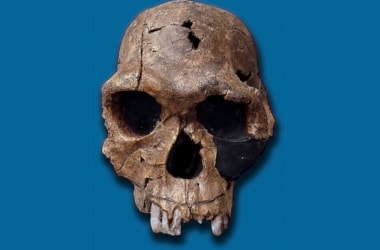
A new study claims that the split of the common lineage of great apes and humans probably occurred in Europe and not in Africa.
The bold hypothesis is based on an analysis of 7.2-million-year-old fossil remains.
As of now, it was widely believed that the human lineage split from that of apes some 7 million years ago in Africa.
According to the new study, the common lineage of great apes and humans split several hundred thousand years earlier than assumed until now.
The research team analysed the two known specimens of the fossil hominid Graecopithecus freybergi: a mandible (lower jaw) from Greece and an upper premolar tooth from Bulgaria.
Using computer tomography, the researchers visualised the internal structures of the fossils and demonstrated that the roots of premolars are widely fused.
Great apes typically have two or three separate and diverging roots, whereas the roots of Graecopithecus converge and are partially fused, which is a feature that is characteristic of modern humans, early humans and several pre-humans including Ardipithecus and Australopithecus.
The lower jaw, nicknamed ‘El Graeco’ by the scientists, has additional dental root features, suggesting that the species Graecopithecus freybergi might belong to the pre-human lineage.
Furthermore, Graecopithecus is several hundred thousand years older than the oldest potential pre-human from Africa, the six to seven million year old Sahelanthropus from Chad.
The research team dated the sedimentary sequence of the Graecopithecus fossil sites in Greece and Bulgaria with physical methods and got a nearly synchronous age for both fossils: 7.24 and 7.175 million years old.
Recent analysis of a 3.3-million-year-old hominin fossil has provided researchers with the most complete human spine of any early human relative.
The analysis offers a unique snapshot of a crucial transition point as humans’ early ancestors evolved towards bipedalism.
The findings were published in the journal Proceedings of the National Academy of Sciences.
The fossil, known as Selam, is a nearly complete skeleton of a two-and-half-year-old child discovered in Dikika, Ethiopia, in 2000.
Selam: Know More- Selam was an early human relative from the species Australopithecus afarensis. Selam means peace in the Ethiopian Amharic language.
- The research shows that the general structure of the human spine emerged over 3.3 million years ago. The fossil provided the first glimpse into how humans’ early ancestors’ spines were organised.
- At the European Synchrotron Radiation Facility in Grenoble, France, the research team used high-resolution imaging technology to visualise the bones of Selam.
- The scans indicated that Selam had the distinctive thoracic-to-lumbar joint transition found in other fossil human relatives.
- The specimen is the first to show that, like modern humans, our earliest ancestors had only twelve thoracic vertebrae and twelve pairs of ribs. That is fewer than in most apes.
- This unusual early human configuration may be a key in developing more accurate scenarios concerning the evolution of bipedality and modern human body shape.
- This configuration marks a transition toward the type of spinal column that allows humans to be the efficient, athletic walkers and runners.